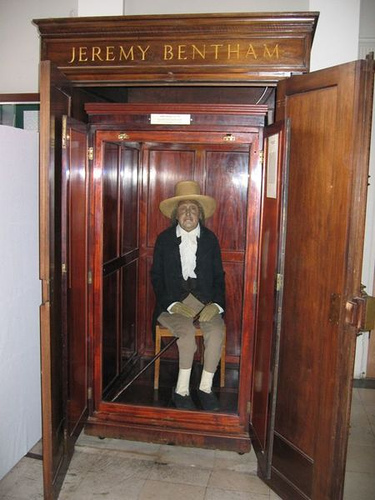The most common birthday in the United States is Oct. 5.
That’s nine months after New Year’s Eve.
The most common birthday in the United States is Oct. 5.
That’s nine months after New Year’s Eve.

Born in 1868, Myrtle Corbin had two separate pelvises, side by side — each of her large outer legs was paired with a small inner one. She could move the small ones, but they were too weak for walking.
The condition didn’t slow her down — she married a doctor at 19 and eventually gave birth to four daughters and a son.
C-3PO and R2-D2 are the only characters that survive all six Star Wars movies.
Idaho means nothing. When Congress was casting about for a name for a new western territory, an eccentric lobbyist named George M. Willing suggested “Idaho,” which he said was derived from a Shoshone Indian term meaning “the sun comes from the mountains” or “gem of the mountains.”
He later admitted that he’d made it up.

When the English jurist and philosopher Jeremy Bentham died in 1832, his body was preserved and stored in a wooden cabinet at University College London. That was his request. It’s still there — you can see it at the end of the South Cloisters in the college’s main building. Occasionally it’s brought to council meetings, where Bentham is listed as “present but not voting.”
Unfortunately, students kept stealing the head (apparently a disquieting English custom), so the trustees replaced it with a wax one. Bentham’s real head is locked up in an undisclosed location.
“Always do sober what you said you’d do drunk. That will teach you to keep your mouth shut.” — Ernest Hemingway
Countries with highest life expectancies:

Sadly, there are no Friendly’s restaurants on Shades of Death Road, which runs for fully 7 miles through Warren County, N.J.
The sign is stolen so frequently that local residents have started greasing the pole. That’s a good trick, but it’s not appropriate everywhere.
If a person stand beneath a railway girder-bridge with an open umbrella over his head, when a train is passing, the vibration of the air will be distinctly felt in the hand which grasps the umbrella, because the outspread surface collects and concentrates the waves into the focus of the handle.
— Barkham Burroughs’ Encyclopaedia of Astounding Facts and Useful Information, 1889
This will be an eventful century, if our science fiction writers are right. Here’s what to expect:
Oh, and in the late 21st century Superman leaves Earth. Better hurry and get that autograph.